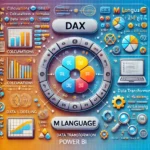Bugzilla vs. Redmine: Comparing Two Bug Tracking and Project Management Tools
In the realm of software development, bug tracking and project management are critical components for delivering high-quality products on time. Bugzilla and Redmine are two widely used tools that help development teams streamline bug tracking and project management processes. While both platforms aim to improve collaboration and efficiency, they have distinct features that cater to different project needs. In this blog post, we will conduct a comprehensive comparison of Bugzilla and Redmine, helping you make an informed decision based on your team’s specific requirements.
Bugzilla: The Robust Bug Tracking System
Bugzilla is a powerful open-source bug tracking system that has been widely adopted by the software development community. Developed and maintained by Mozilla, Bugzilla is specifically designed to manage and track software bugs efficiently. Key features of Bugzilla include:
- Bug Tracking: Bugzilla excels in its core functionality of bug tracking, enabling teams to create, prioritize, and assign bugs with ease.
- Customizable Workflows: Bugzilla offers customizable workflows, allowing teams to tailor the bug management process to suit their specific needs.
- Advanced Search: Bugzilla’s powerful search capabilities enable quick and accurate bug retrieval based on various criteria.
- Email Integration: Bugzilla seamlessly integrates with email systems, providing real-time updates and notifications on bug status and changes.
- Reporting and Analytics: Bugzilla offers basic reporting features, providing insights into bug trends and performance metrics.
https://synapsefabric.com/2023/07/24/bugzilla-vs-mantis-a-comparative-analysis-of-bug-tracking-tools/
Redmine: The Versatile Project Management Tool
Redmine, on the other hand, is an open-source project management tool that combines bug tracking, issue management, and collaboration features. It offers versatility for various project types and is widely used for its customizable interface. Key features of Redmine include:
- Bug Tracking and Issue Management: Redmine provides bug tracking capabilities and extends to managing other types of issues, tasks, and user stories.
- Customization: Redmine offers extensive customization options, allowing teams to adapt the tool to match their specific project workflows.
- Collaboration: Redmine emphasizes team collaboration with discussion threads and file attachments, fostering effective communication.
- Time Tracking: Redmine includes built-in time tracking features, allowing teams to monitor the time spent on tasks and projects.
- Wiki and Documentation: Redmine offers a built-in wiki feature that facilitates documentation and knowledge sharing within the team.
Choosing the Right Tool
When considering Bugzilla vs. Redmine, take the following factors into account:
- Bug Tracking Focus: If your team’s primary requirement is a dedicated and robust bug tracking system, Bugzilla is an ideal choice.
- Versatility and Project Management: If your team needs a more comprehensive project management tool that includes bug tracking, Redmine provides a versatile solution.
- Customization: Both Bugzilla and Redmine offer customization options, but Redmine’s flexibility allows for greater adaptation to your specific project needs.
- Collaboration and Documentation: If effective collaboration and documentation are crucial for your team’s workflow, Redmine’s built-in wiki feature might be advantageous.
In conclusion, both Bugzilla and Redmine are valuable tools with unique strengths. Bugzilla excels as a dedicated bug tracking system, ideal for teams seeking a reliable open-source solution for managing software bugs. Redmine, on the other hand, offers versatility by combining bug tracking with robust project management capabilities.
The choice between Bugzilla and Redmine depends on your team’s specific requirements, preferred workflow, and project management needs. By carefully evaluating the features and benefits of each tool, you can select the one that aligns best with your team’s goals, streamlines bug tracking and project management, and ensures successful project delivery.






